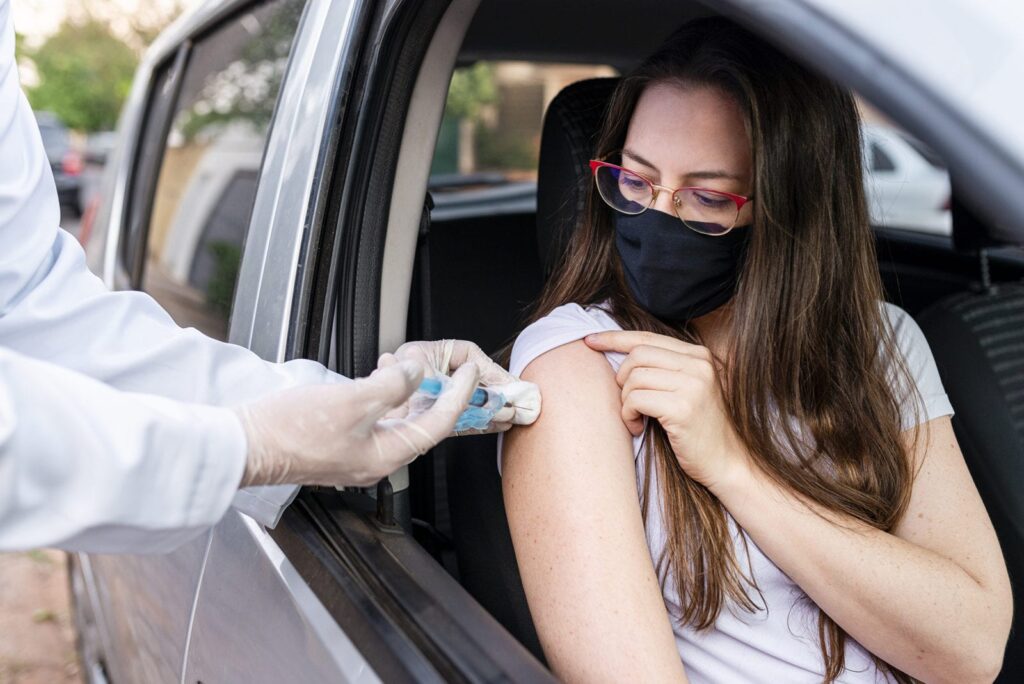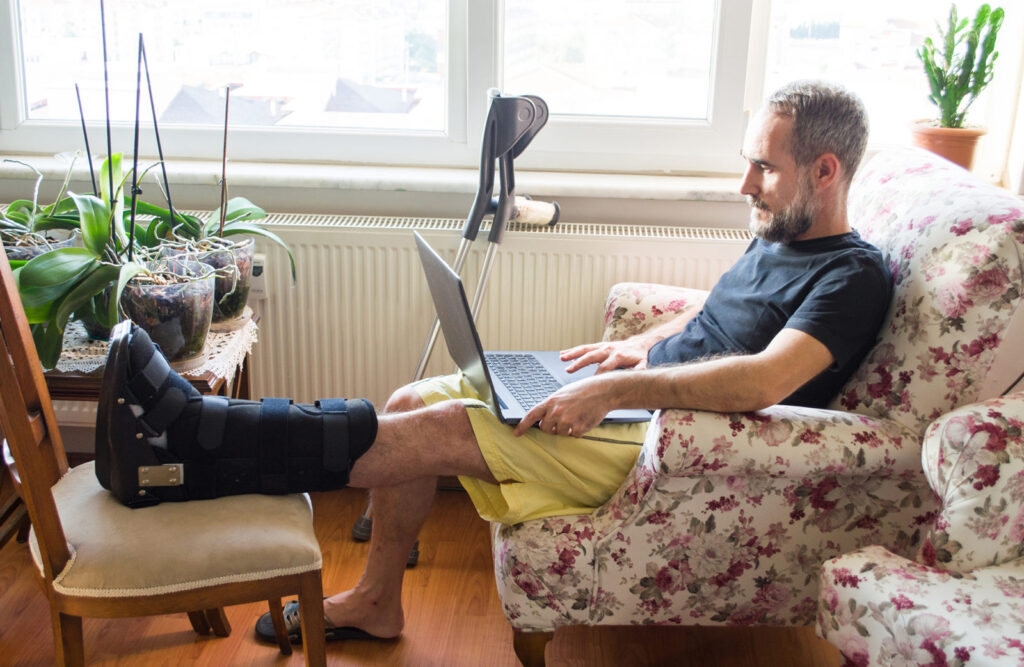
Terry McInnis, MD, MPH, CPE, president of Blue Thorn Inc. and member of the Medecision Advisory Board; and Terri Steinberg, MD, MBA, FACP, FAMIA, Medecision’s Group Senior Vice President of Analytics and Population Health and Chief Medical Officer, share what we need to know about COVID-19 vaccines, immunity and variants.
By Medecision
Over the past 14 months, more than 31 million Americans have been diagnosed with COVID-19 and more than 562,000 Americans have died from the virus. But with the emergence of three vaccines that have proved effective at preventing COVID-19, we have reached a positive turning point in our response to the pandemic.
As of April 13, 2021, more than 123.9 million Americans have received at least one dose of a COVID-19 vaccine, and about 76.7 million are fully vaccinated, said Dr. Terry McInnis, president of Blue Thorn Inc. and member of the Medecision Advisory Board. While the vaccines were available only for older adults at first, most states have now made them available for all adults age 16 and up, and more than 3 million vaccinations are being administered every day in the United States. In early April, President Biden said that by April 19, all U.S. adults will be eligible to receive a vaccine, speeding up a timeline he initially released in March. As more people continue to be vaccinated, the population will build greater immunity, which will continue to protect us from COVID-19 and its ability to change and mutate.
COVID-19 Vaccine Reminders
Although millions of Americans have taken the step to become vaccinated from COVID-19, a few myths continue to circulate, creating hesitation among others about getting the vaccine, Dr. McInnis said. For instance, some people continue to believe that the vaccinations will inject them with the live virus or alter their DNA, but that is untrue.
“These are messenger RNA vaccines that do not change your DNA,” Dr. McInnis said. “You cannot get COVID-19 from these vaccines.”
However, some people do experience side effects from the vaccines. Some have a local reaction, which is just a sore arm or pain at the site of the injection. These reactions subside within a few days. Others may have systemic reactions, such as a headache, fatigue, fever and muscle aches. These reactions occur more often in people under the age of 55 and usually last no more than a couple of days, Dr. McInnis said.
Try to “lean into the immune response, because that is what the reaction is,” Dr. Steinberg said. “It’s your body building up your antibodies. I felt miserable, but I was never so happy to feel miserable because that was my body protecting me and building up immunity, so lean into it. And it does usually go away by the next day.”
In much rarer cases, some people experience a very red area about one week after the vaccination and may have lymphadenopathy, which causes lymph nodes to enlarge on the side where they received the injection, and it could be mistaken for a lump in the breast area. That is not an indication of breast cancer, and it should resolve within two to four weeks. Fortunately, many radiologists are aware of this and routine mammograms can be later scheduled.
Of the three COVID-19 vaccines approved for use in the United States, the one manufactured by Johnson & Johnson requires only one shot. However, on April 13, the Centers for Disease Control and Prevention (CDC) and Food and Drug Administration (FDA) recommended a pause in the administration of the Johnson & Johnson vaccine to investigate some very rare blood clotting problems in women under the age of 50.
The other two vaccines, manufactured by Pfizer and Moderna, require two shots, three to four weeks apart. Most people who have experienced side effects did so after the second shot. However, it’s important not to miss the second shot for fear of side effects because that second shot is crucial for building full immunity to the virus.
Understanding Immunity
All three COVID-19 vaccines that have been administered in the United States have been shown to be 100% effective at preventing death from the coronavirus, and they are between 75% and 95% effective at preventing infection with the coronavirus. “The vaccines are roughly 85% effective, which is absolutely a home run; that’s the best vaccine we’ve ever produced,” explained Dr. Steinberg, Medecision’s Group Senior Vice President of Analytics and Population Health and Chief Medical Officer.
Although the vaccines are highly effective, the coronavirus changes over time. Most of us have heard about variants that are already spreading such as the South African variant, the UK variant and the Brazilian variant. However, the current vaccines have shown some effectiveness against the variants, and “the manufacturers are already making changes to the vaccine components so that they can come out with boosters as we need those to really keep this virus at bay,” Dr. McInnis said. “And remember, the more of us that are able to get shots quickly, the less circulating virus there is, and the less ability this virus then has to change.”
One silver lining of the coronavirus pandemic is the huge advances our scientific community has made in vaccines, Dr. McInnis added. Because we’ve accelerated our ability to develop vaccines and learned so much so quickly about how to vaccinate against certain viruses, Dr. McInnis predicts we will see incredible improvements in targeting new bacteria and viruses, including additional variants of COVID-19. For instance, as a result of new advances, the scientific community will be able to develop longer-lasting vaccines that hit multiple strains of diseases and can be developed more cheaply, Dr. McInnis said.
Doing Our Part
As vaccines become increasingly available, Dr. McInnis and Dr. Steinberg encourage everyone who is eligible to get a COVID-19 vaccine. The Pfizer vaccine is safe for anyone age 16 or older, while Moderna and Johnson & Johnson (when it becomes available again) are for 18 and older. The only people who should not get any of the vaccines are those with a history of allergic reaction to polyethylene glycol (PEG) or polysorbate, and those who have had antibody therapy or convalescent plasma in treatment of Covid in the last 90 days.
Because there will always be some people in the population who are unable to be vaccinated, it’s up to the rest of us to vaccinate ourselves and help drive down the ability of the virus to continue traveling through our communities. That way, we can help protect ourselves as well as those who may not be able to mount a sufficient response to the vaccine (such as those that are the extremely frail elderly and immunocompromised- such as on cancer chemotherapy or steroids).
“You take it because a lot of this is really not about you, to be honest,” Dr. McInnis said. “You’re part of this ecosystem, and you’re part of a community.”
By getting a shot when it’s available to us, we can all help defeat the virus and save lives in our own families, in our communities and around the world.
Note from the Editor: On Tuesday, April 13, 2021, the Centers for Disease Control and Prevention (CDC) and the Food and Drug Administration (FDA) recommended a “pause” in administering the single-dose Johnson & Johnson COVID-19 vaccine in order to investigate reports of very rare but potentially dangerous blood clots that have occurred in six women between 6 and 13 days after vaccination. The CDC and FDA are using a standard scientific methodology to assess the risk. According to Dr. Steinberg, though the risk is worrisome, it’s important to remember that the chances of dying from COVID-19 are 1 in 1,600 while the chances of getting a blood clot from the Johnson & Johnson vaccine is less than 1 in a million. As of April 13, 2021, more than 6.8 million doses of the Johnson & Johnson vaccine have been given in the United States—the vast majority with no or mild side effects.
Get more: Check in on COVID-19 prevention strategies and take a look back to Dr. McInnis’ perspectives from the early days of the COVID-19 pandemic.



About The Author: Medecision
Fully delivering on the promise of data — and making the business of healthcare simpler and more successful — Medecision offers a whole new world of possibilities. The company's flagship offering, Aerial™, stands as the market's most extensible clinical data platform. It offers complete contextual awareness of members and automates next best actions — simple campaigns, complex care management, utilization approvals, and more — for optimal health outcomes.
Aerial is not only quick to deploy, it is easy to manage. The platform's effectiveness in reducing both medical and administrative costs, coupled with its role in improving the member and patient experience, has made it the preferred choice for health plans and care delivery organizations. Presently, Aerial is instrumental in catering to over 10% of the U.S. population, marking a significant milestone in advancing healthcare efficiency and effectiveness.
More posts by Medecision